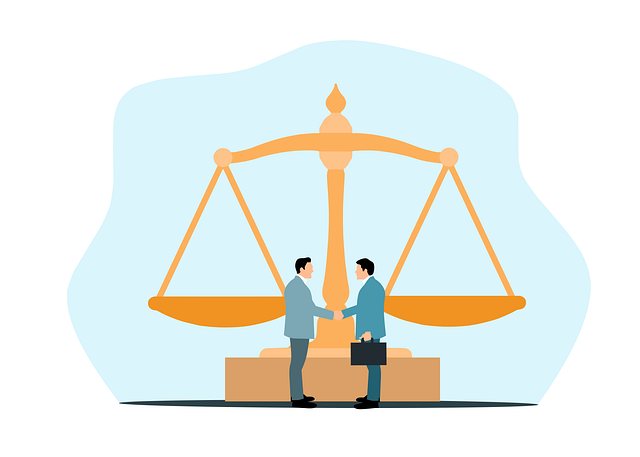In today's digital era, understanding and complying with environmental regulations is crucial for business success and planetary health. Strict adherence fosters positive community relationships and demonstrates commitment to sustainability. Proactive measures like audits and best practices mitigate risks, enhance reputation, and prevent environmental harm. Navigating litigation involves a strategic balance between strict compliance and robust defense, requiring strong internal controls, employee training, and comprehensive legal strategies to manage public scrutiny and regulatory actions. Effective navigation ensures fair outcomes while upholding ecological balance. Learn the art of navigating these regulations through "How to Navigate Environmental Regulations Litigation."
In the realm of criminal law enforcement, understanding and navigating environmental regulations is paramount for businesses to avoid costly litigation. This article serves as a comprehensive guide on how to manage and defend against environmental compliance issues. We explore key aspects such as deciphering complex regulations, employing strategic legal defenses, and analyzing real-world case studies showcasing successes and challenges in environmental enforcement actions. By delving into these topics, we equip businesses with essential tools to effectively navigate environmental regulation litigation.
- Understanding Environmental Regulations and Their Impact on Businesses
- Navigating Litigation: Legal Strategies for Compliance and Defense
- Case Studies: Successes and Challenges in Environmental Enforcement Actions
Understanding Environmental Regulations and Their Impact on Businesses

In today’s world, businesses must navigate a complex web of environmental regulations to achieve extraordinary results while maintaining their operations. These laws, designed to protect our planet and its inhabitants, are enforced at all stages of the investigative and enforcement process, impacting everything from manufacturing practices to waste management. Understanding these regulations is crucial for any business aiming to stay compliant and avoid costly litigation. By delving into the intricacies of environmental law, companies can ensure their activities do not cause undue harm to the environment or nearby communities.
Learning how to navigate environmental regulations litigation is essential for businesses seeking to foster positive relationships with philanthropic and political communities. Compliance goes beyond legal obligations; it reflects a company’s commitment to sustainability and social responsibility. Through proactive measures, such as regular audits and adherence to best practices, organizations can mitigate risks and demonstrate their dedication to minimizing environmental impacts. This approach not only helps avoid legal pitfalls but also enhances the company’s reputation in the eyes of stakeholders across various sectors.
Navigating Litigation: Legal Strategies for Compliance and Defense

Navigating environmental regulations litigation is a complex task that requires a strategic approach to both compliance and defense. Businesses must understand the intricate web of laws and regulations governing their operations, particularly in industries with significant environmental impacts. To effectively manage such cases, legal teams should employ robust internal controls and compliance programs, ensuring that their clients’ activities adhere strictly to applicable standards. Regular training and education for employees can help foster a culture of environmental responsibility, reducing the risk of non-compliance.
In high-stakes cases involving filantropic and political communities, strategic legal planning is paramount. Environmental litigators must anticipate potential challenges, such as public scrutiny and regulatory enforcement actions, by developing comprehensive defense strategies. This includes gathering scientific evidence, employing expert witnesses, and presenting compelling arguments to protect their clients’ interests. By balancing the need for strict compliance with the complexities of litigation, legal professionals can navigate these cases successfully, ensuring fair outcomes for all involved parties.
Case Studies: Successes and Challenges in Environmental Enforcement Actions

Environmental Enforcement Actions: A Balancing Act
In the realm of criminal law enforcement, navigating environmental regulations litigation is a complex task that demands meticulous attention to detail and strategic planning. Case studies reveal both successes and challenges in these high-stakes cases. On one hand, successful prosecution of environmental violators has led to achieving extraordinary results in holding polluters accountable and reinstating ecological balance. These victories not only deter future misconduct but also serve as a testament to the effectiveness of stringent enforcement mechanisms.
However, navigating complex environmental regulations can be a labyrinthine process, presenting numerous hurdles for general criminal defense attorneys. Challenges include deciphering intricate legal frameworks, gathering scientific evidence, and ensuring compliance with evolving standards. Effective strategies involve staying abreast of legislative changes, fostering collaborations with experts in environmental science and law, and employing innovative approaches to interpret regulatory requirements. Balancing the need for stringent enforcement with the complexities of these cases is crucial in achieving just outcomes while avoiding undue burdens on businesses and individuals.
Criminal law enforcement plays a crucial role in ensuring businesses comply with environmental regulations. Understanding these regulations, adopting robust legal strategies for litigation, and learning from case studies can significantly mitigate risks. By navigating environmental regulation litigation effectively, companies not only avoid legal penalties but also foster sustainable practices, contributing to a greener future. To successfully navigate this process, it’s essential to stay informed about regulatory changes and develop proactive measures to protect against potential enforcement actions.






